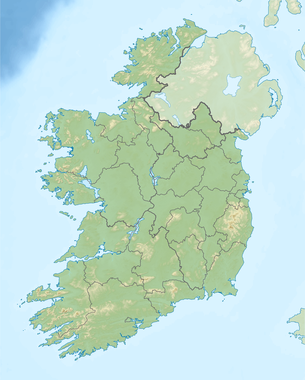Battle of Liscarroll
Coordinates: 52°15′37″N 8°48′13″W / 52.260319°N 8.803681°W
This article needs additional citations for verification. (May 2020) |
| Battle of Liscarroll | |||||||
|---|---|---|---|---|---|---|---|
| Part of the Irish Confederate Wars | |||||||
| |||||||
| Belligerents | |||||||
|
|
| ||||||
| Commanders and leaders | |||||||
| Murrough O'Brien | Garret Barry | ||||||
| Strength | |||||||
|
2,000 foot 400 horse[1] |
7,000 foot 1,500 horse[1] | ||||||
| Casualties and losses | |||||||
| Low | 600 | ||||||

The Battle of Liscarroll was fought in County Cork on 3 September 1642, at the start of the Eleven Years' War. An Irish Confederate army approximately 8,500 strong commanded by Garret Barry, a professional soldier, was defeated by an English force commanded by a Protestant Irishman, Earl of Inchiquin.[2][3]
Opposing forces[]
The Confederate army was composed of militias created by local lords after the Irish Rebellion of 1641. The English force was made up of a contingent of soldiers sent from England and the English settlers in Munster such as the Boyle family, three of whom Roger Boyle, 1st Earl of Orrery; Richard Boyle, 2nd Earl of Cork; and Lewis Boyle, Viscount Boyle of Kinalmeaky, fought at the battle. Lewis Boyle was killed during the fighting.
Barry seized Liscarroll Castle on the Awbeg river trying to cut off the English held city of Cork. Inchiquin marched his troops out of the city to re-take the castle and the battle was joined close by.
The Confederate's cavalry were led by a man named Oliver Stephenson, who was descended from Elizabethan English settlers but had sided with the Irish rebellion because he was a Catholic.
The battle[]
Stephenson's horsemen charged Inchiquin's force, putting them into disorder and even capturing Inchiquin himself. However, in the melee, Stephenson was shot dead by Inchiquin's brother (through the eye-piece of his helmet) and the Irish cavalry lost heart and fell back. The Irish infantry lacked the training and discipline to stand up to a cavalry charge and took flight when attacked, leading to a rout of the Irish forces. The vast difference in muskets was also a major factor in the defeat of the Irish, some 1500 against 500. Most Irishmen were pike armed.
Casualties and consequences[]
Around 600 Irish Confederates were killed, including a high proportion of their officers like Stephenson. The local Catholic gentry were decimated by the battle, for instance the Fitzgerald family of the House of Desmond lost 18 of their members killed. They were buried in a collective grave just outside Liscarroll. In addition, Inchiquin executed 50 more Confederate officers whom he had taken prisoner, hanging them the next morning. The battle meant that Cork would be a British and Protestant stronghold for the rest of the war.
See also[]
- Wars of the Three Kingdoms
- Irish Confederate Wars
- Irish battles
References[]
Sources[]
- "The Battle for Liscarroll Castle". Cork Independent. 25 February 2016. Retrieved 23 May 2020.
- "Ireland's Wars: Liscarroll". Never Felt Better. Never Felt Better. 22 May 2013. Retrieved 23 May 2020.
- Lee, Sidney, ed. (1895). Dictionary of National Biography. New York: MacMillan and Co.
- O'Connell, Denis. "Battle of Liscarroll". Liscarroll. Liscarroll Community Council. Retrieved 23 May 2020.
- Battles of the Irish Confederate Wars
- History of County Cork
- 1642 in Ireland
- Conflicts in 1642
- Military history of Ireland
- Battles involving Ireland